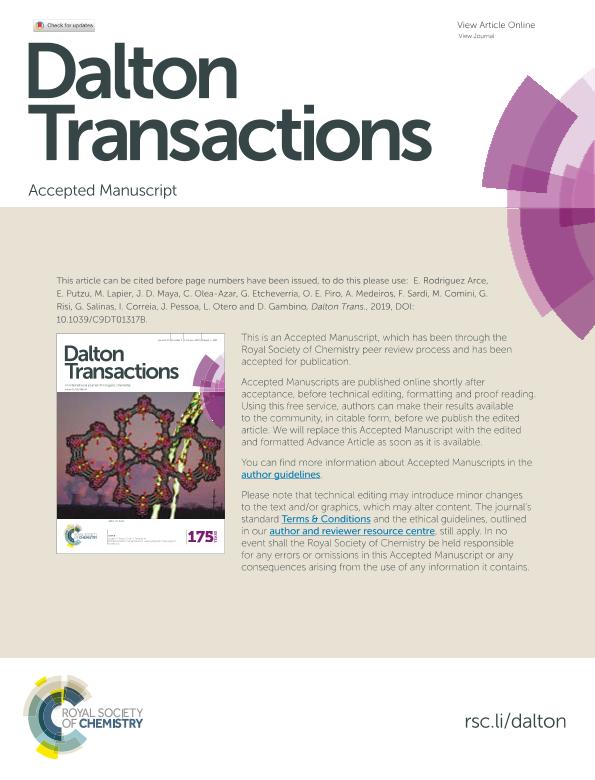Artículo
New heterobimetallic ferrocenyl derivatives are promising antitrypanosomal agents
Rodríguez Arce, Esteban; Putzu, Eugenia; Lapier, Michel; Maya, Juan Diego; Olea Azar, Claudio; Echeverría, Gustavo Alberto ; Piro, Oscar Enrique
; Piro, Oscar Enrique ; Medeiros, Andrea; Sardi, Florencia; Comini, Marcelo; Risi, Gastón; Salinas, Gustavo; Abad Villamor, Ana Isabel; Pessoa, João Costa; Otero, Lucía; Gambino, Dinorah
; Medeiros, Andrea; Sardi, Florencia; Comini, Marcelo; Risi, Gastón; Salinas, Gustavo; Abad Villamor, Ana Isabel; Pessoa, João Costa; Otero, Lucía; Gambino, Dinorah
 ; Piro, Oscar Enrique
; Piro, Oscar Enrique ; Medeiros, Andrea; Sardi, Florencia; Comini, Marcelo; Risi, Gastón; Salinas, Gustavo; Abad Villamor, Ana Isabel; Pessoa, João Costa; Otero, Lucía; Gambino, Dinorah
; Medeiros, Andrea; Sardi, Florencia; Comini, Marcelo; Risi, Gastón; Salinas, Gustavo; Abad Villamor, Ana Isabel; Pessoa, João Costa; Otero, Lucía; Gambino, Dinorah
Fecha de publicación:
15/04/2019
Editorial:
Royal Society of Chemistry
Revista:
Dalton Transactions
ISSN:
1477-9226
Idioma:
Inglés
Tipo de recurso:
Artículo publicado
Clasificación temática:
Resumen
In the search for a more effective chemotherapy for the treatment of Chagas´ disease and human African trypanosomiasis, caused by Trypanosoma cruzi and Trypanosoma brucei parasites, respectively, the use of organometallic compounds may be a promising strategy. In this work, eight new heterobimetallic compounds are described including four 5-nitrofuryl containing thiosemicarbazones as bioactive ligands (HL1-HL4) and dppf = 1,1′-bis(diphenylphosphino) ferrocene as an organometallic co-ligand. Complexes of the formula [MII(L)(dppf)](PF6) with M = Pd or Pt were synthesized and fully characterized in the solid state and in solution, including the determination of the molecular structure of four of them by single crystal X-ray diffraction methods. Most compounds showed activity in the low micromolar or submicromolar range against both parasites, with the platinum compounds being more active than the palladium analogues. Activity was significantly increased by generation of the M-dppf compounds (3-24 fold increase with respect to free ligands HL for T. cruzi and up to 99 fold increase with respect to HL for T. brucei). The inclusion of the organometallic co-ligand also led to lower toxicity in mammalian cells and higher selectivity towards both parasites when compared to the free HL compounds. The complexes interact with DNA and affect the redox metabolism of the parasites. Furthermore, the most active and selective compound of the new series showed no in vivo toxicity in zebrafish embryos.
Archivos asociados
Licencia
Identificadores
Colecciones
Articulos(IFLP)
Articulos de INST.DE FISICA LA PLATA
Articulos de INST.DE FISICA LA PLATA
Citación
Rodríguez Arce, Esteban; Putzu, Eugenia; Lapier, Michel; Maya, Juan Diego; Olea Azar, Claudio; et al.; New heterobimetallic ferrocenyl derivatives are promising antitrypanosomal agents; Royal Society of Chemistry; Dalton Transactions; 48; 22; 15-4-2019; 7644-7658
Compartir
Altmétricas



